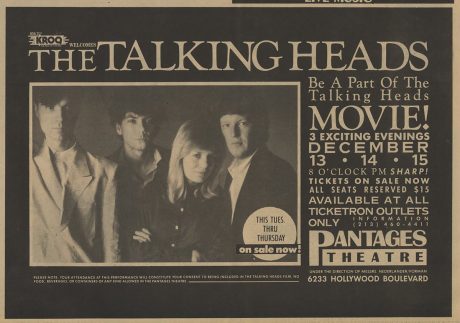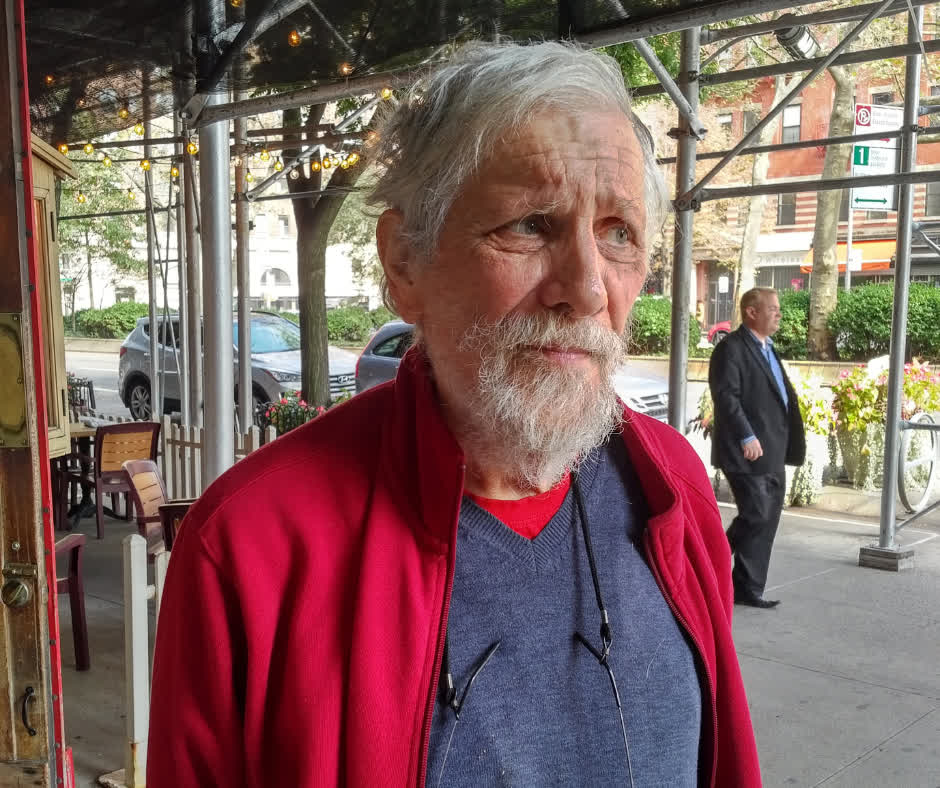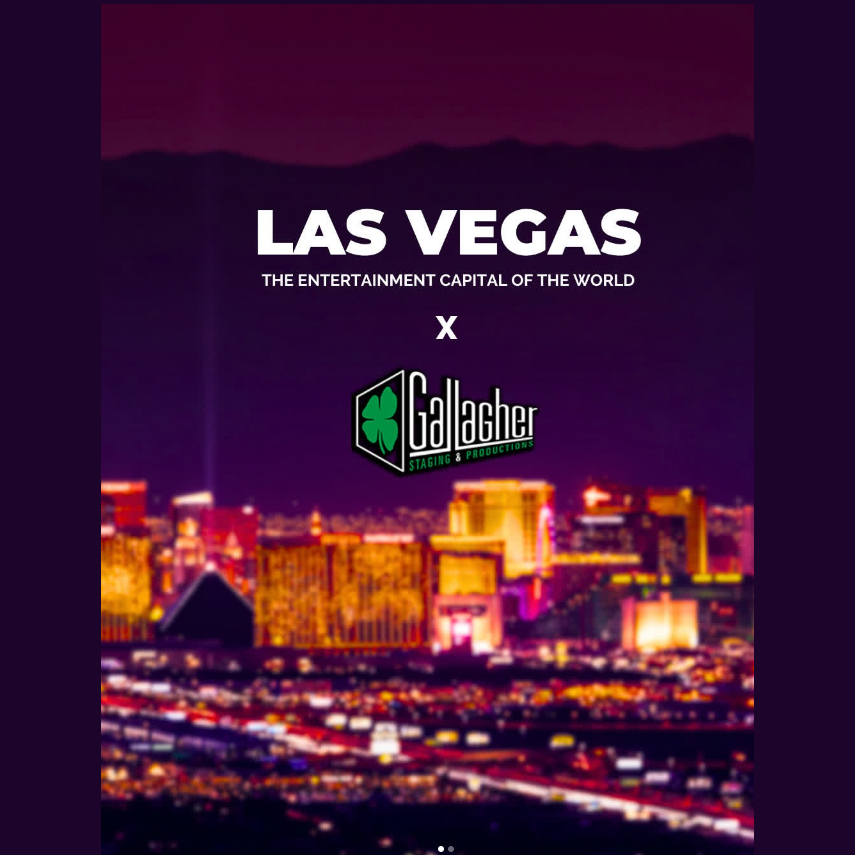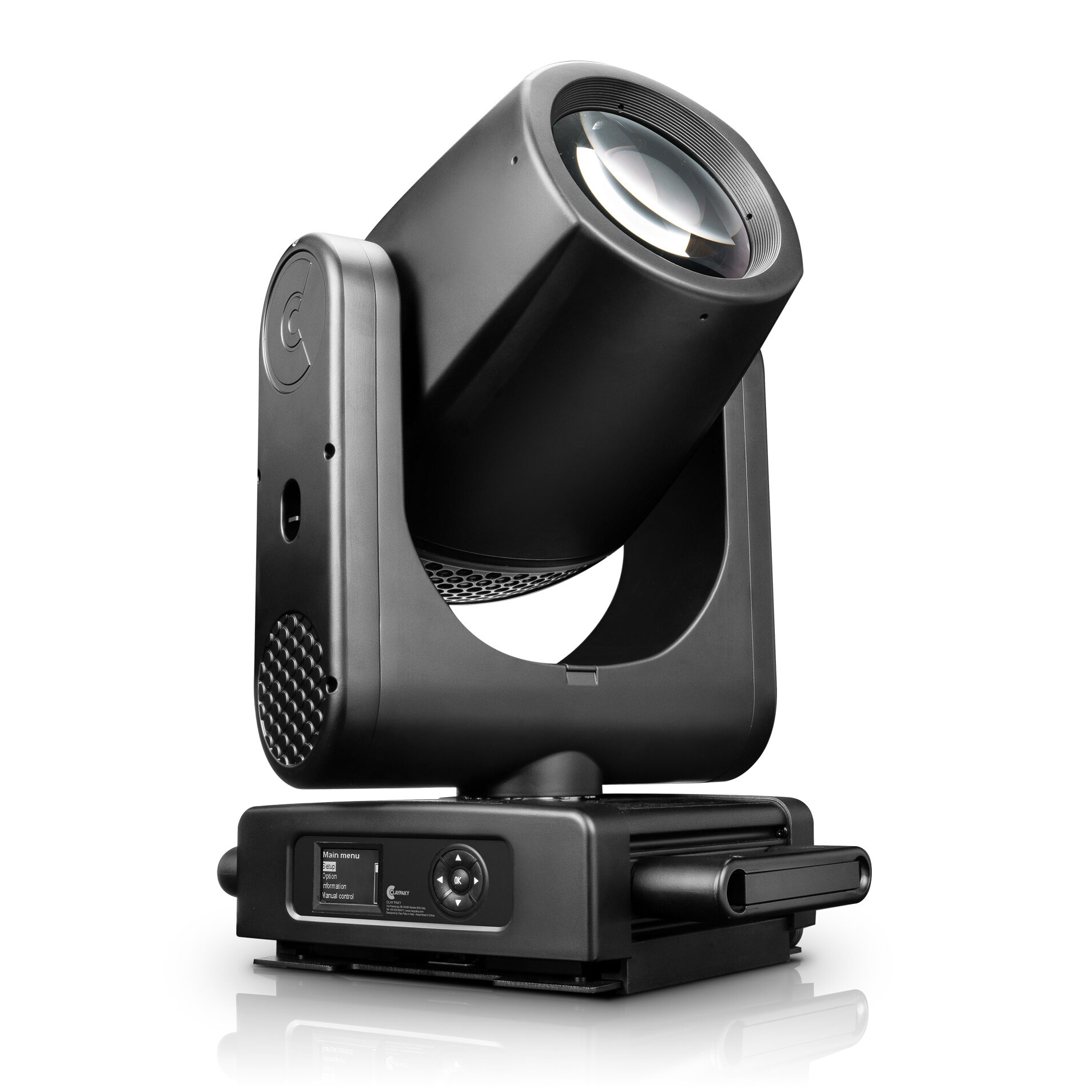
Imagine working on a show when you’re only a 25 year old punk, but knowing even then, that you’ve latched on to something that will probably be the best gig you’ll ever be involved in. I mean for the rest of your life. For near 40 years I’ve been asked the same question – what was your favorite gig?
No production I have seen has topped it yet. Not Live Aid, not the Eagles Hell freezes Over, not Madonna’s Blond Ambition, none of these hold a candle to what this band did back in 1983. The name of this band is Talking Heads. The tour was called Speaking in Tongues. The movie from the tour was Stop Making Sense. David Byrne was the star with the big suit, I was the electrician moving lights around, as opposed to a moving light technician.
I’ve seen over 1000 concerts in my life and it’s usually a straightforward approach, mix the hits in with the new songs and save the biggest one for the encore. “Burning Down the House” ruled MTV in 1983 and was on continuous rotation the length of this tour. The tour had no opening acts, just a show in two parts with an intermission. So it seemed to throw everyone in the audience off balance when drummer Chris Frantz yelled out “Anybody got a match?” only 40 minutes into their first set.
The band came back with another new set of songs for the second half only to add Burning down the House for a second time each evening. Of course the crowd would looked baffled for a few seconds of “Wait a sec, Didn’t they?” before busting into applause and just dancing like nobody’s watching you.
I was hired by See Factor in 1982, a few weeks after finishing a tour in which I had mixed audio for the opening act on the previous Talking Heads tour. Mike Sinclair was the head of the audio department at this NYC location and he had hired me, kept me busy doing anything he could in between audio gigs. That included lighting work when he ran out of audio shows. He put me out on this tour.
I went to work with Bob See within six months of my college graduation. I’m not sure if he ever called me by name, it was usually just “College Boy” or “Shnookums.” Deep down I know he liked Abby Rosen the chosen Lighting Director, and I because we had gone for a secondary education as he did himself at NYU. So as my friends went off on tour with mega acts and big rigs that took all day to build and focus, I had a gig that required me to build the rig while the show was actually going on.
Spring of 1983 finds us rehearsing in a damp dark warehouse on the Hudson River by 23rd St in Manhattan. A Broadway lighting designer named Beverly Emmons and singer David Byrne had put together an all-white light, lighting show. The entire show was scripted ala a story book; lined with illustrated images of how each song progressed, player movement and how it would be lit. The show would start with just David and his acoustic guitar on a bare stage, accompanied by a boom box (affectionately called a ghetto blaster at the time) and a lone spotlight. When that song finished, he would be joined by Tina the bassist for the second song, drummer Chris for the 3rd one and so on until ten musicians and four risers filled the stage.
The lighting seemed basic, a front and rear truss that held a total of 46 par 64 tungsten fixtures with no gel. Narrow and medium pars were spec’d. The bigger light show involved the 150 different fixtures which I and a team of four stagehands would bring out on stage starting on the first number, dressed in show blacks. Before the show I ran out several road cases full of cables as well as the lights to test them for the evening’s performance. Then I would coil all the cables backwards in sequential order and make one large figure 8 pile. That way I could grab a cable and just walk it onstage without being paged when the time came. Same with my collection of light fixtures. I’d purposely lower some scenic trusses down before doors, only to raise them to trim later in the show.
The lighting design brought out all the power of white light in various color temperatures and many fixtures were utilized for one particular song, then never seen again. The Talking Heads first big hit was a cover of Take Me to the River, an Al Green gospel song with a bass line from Tina that could hook anyone from any genre. I started that song by turning on a single 575 watt ARRI HMI fixture standing down stage left. This single bulb would take a couple minutes to warm up. It emitted a bluish light as it started warming up, making the dancing stage look spooky. Eventually the light changed color temperature, turning into a bright white source that bathed the entire stage from one side. The band was dark on their right side. It was lighting art and nobody else was doing it like the Heads. Every song brought a new look.
Thus was my introduction to Shadow Play with lighting. This was my first experience with lights really being used as art. I recall one whole song where each member was lit with a single stubby par at their feet giving them raccoon eyes. The whole show was done in white light except for one song, I Zimbra. This Africanize beat, rhythm fueled, nonsense lyric, song really wound the crowd up as it started with just a full red cyc upstage and the entire dancing band silhouetted by it. The crowd, after only seeing white light on for 45 minutes burst into cheers from this visual splendor. We went right back to just white light after that moment, but we did have projection in use from the rear. Our projectionist (Zoot Damnit) would blast nonsensical words thru some songs, the Tom Tom Club artwork filled it at other times.
We played another song where the entire stage was lit by just two technicians with Lowell Omni handheld photo lights. I was in the pit center stage with a light focused on David. As he moved one way, I would go in an opposite direction so his shadow on the back cyc moved around, distorted by his oversized suit and tiny head. Meanwhile carpenter Hans Kastensmith roamed the stage shadows stealthily himself, casting light on individual band members as he moved. The lighting effect was simple, yet original and cool. We spent most of the evening tormenting the band with hot lights not far from their faces, but it was art; nobody ever complained.
Byrne opened the set by carrying out and pressing a button on the ghetto blaster which started the drum click track to Psycho Killer. Then he would play along with an acoustic guitar and a lone spotlight. For the first few weeks the Clair Bros audio guys would mic the blaster and David would turn it on to start the show. Being a sound guy originally, I always wondered why Jeff Hooper the audio guy never just played the tape from his front of house audio rack, like he did the walk in music, but who was I to say a word, being the lowly light guy. I got quite a chuckle the first time the batteries went dead and David couldn’t start the tape. The lone cassette tape was rushed to front of house where it remained the rest of the tour.
While the singer was spastically roaming the 60’ wide stage in convulsions while singing Psycho Killer, my stagehands and I were carrying out a series of 9-lite moles and placing them on the ground upstage, facing the crowd with a tilt. Once David was done with his tune, we rolled out a small riser that had a bass amp and mini keyboard on it for Tina Weymouth. She would accompany David on the second number, Heaven. The sole lighting for that song was the two players silhouetted by blasting nine lighters and a lone par to front light each one. The Drum riser rolled out next. I walked up to his riser that had two Lowell Omni lights on them and plugged them in seconds before Abby turned them on from her Kleigl Performer desk. This small console was the first automated desk I had ever seen and was the choice of theatrical shows at the time, not rock tours.
The same schtick went on for 40 minutes until the stage was full. We had dueling side pars set next to the Clair side fills, they would serve as the primary light for one song. Under each riser we mounted Mole Richardson Nooklites. 57 of these 1k broads were permanently mounted shooting upwards into some roof flashing and bouncing the light back down on to the stage. The idea was to start a song with just those lights on spookily, giving the audience the illusion that the risers were floating on light. It worked, though we burned quite a bit of marley. I think the cue for Abby to douse them was when she notices smoke coming out from the risers.
Speaking of smoke, we didn’t carry any per se. Til one night when David Byrne noticed I kept a fire extinguisher on stage in case of accidents. As the artist was prone to do, he would mix things up along the way. One night he simply grabbed the extinguisher and started shooting it off against the floor forming big plumes of smoke. Afterwards I always had to have the fire extinguisher in the same location. I did convince David that he should use it in the encores, just in case we actually needed it for our show. Those Nooklites were always questionable fire starters.
We were rehearsing somewhere in Vermont or upstate NY one leg, so my girlfriend brought my dog up with her to visit for a few days. Rusty was one of those rescued dogs who followed me everywhere his whole life, Very mellow Shepard mutt. On the opening night of this leg I walked the lamp out and plugged it in while pitch black. The light came on and there stood David, staring down at the dog laying by his feet. Without missing a beat the dog sat up and just looked around for me but stayed in place while the artist serenaded him. At the first interlude David reached down and grabbed my confused mutt by the front paws and they started dancing in a circle on his hind legs. This was only a few seconds. When he dropped the dogs paws Rusty saw me standing side stage and made his exit.
Come the end of the year we find ourselves with a three night stand at the Pantages Theater in LA where director Jonathan Demme is filming the show. The show was condensed with some songs cut, others added. But Demme had done his homework. “if you’re gonna lose this song it’s fine. But I want that red cyc effect used somewhere else.” The director also was insistent at us getting a line of strobes downstage that we could use for a slow motion film look at one point in the show.
Now in 1983 you couldn’t just grab some Atomic Strobes from anyone’s shelf, set them at the same rate and let em sync up. No, the best strobes were the old Diversitronic 3k models with their handset potentiator dials in line for speed. I had the only 20 of these fixtures on the west coast and it was my job to get them all set up at the same speed so they would sync together at a slow rate for the camera effect. This was virtually impossible. Electrician Kevin Hardy and I got two dialed in together that the film crew approved. Then we had to wait for everyone to leave the venue so we could manually get them all to sync over a course of several hours. We had to get all the units on the same single phase of power to do this. This was a painfully long night for us. Probably not as painful as when we all went to the movie premier that spring and realized that bit had ended up on the cutting room floor.
The following February we headed Down Under for a string of festival dates with bands such as INXS, the Pretenders, Simple Minds and the Eurythmics opening for us. These acts would help shape my future. The Heads did their last show of the tour in Christ Church, New Zealand on a rainy, dreary day. There was nothing special about this tiny town hall gig. Nobody realized this would be the last full show this band would ever play. But 37 years later, I’ll forever tell anyone who will listen that it’s still the best band I ever worked with. More fun than any 25 year old kid could ever ask for.
Written by PLSN editor Nook Schoenfeld.



